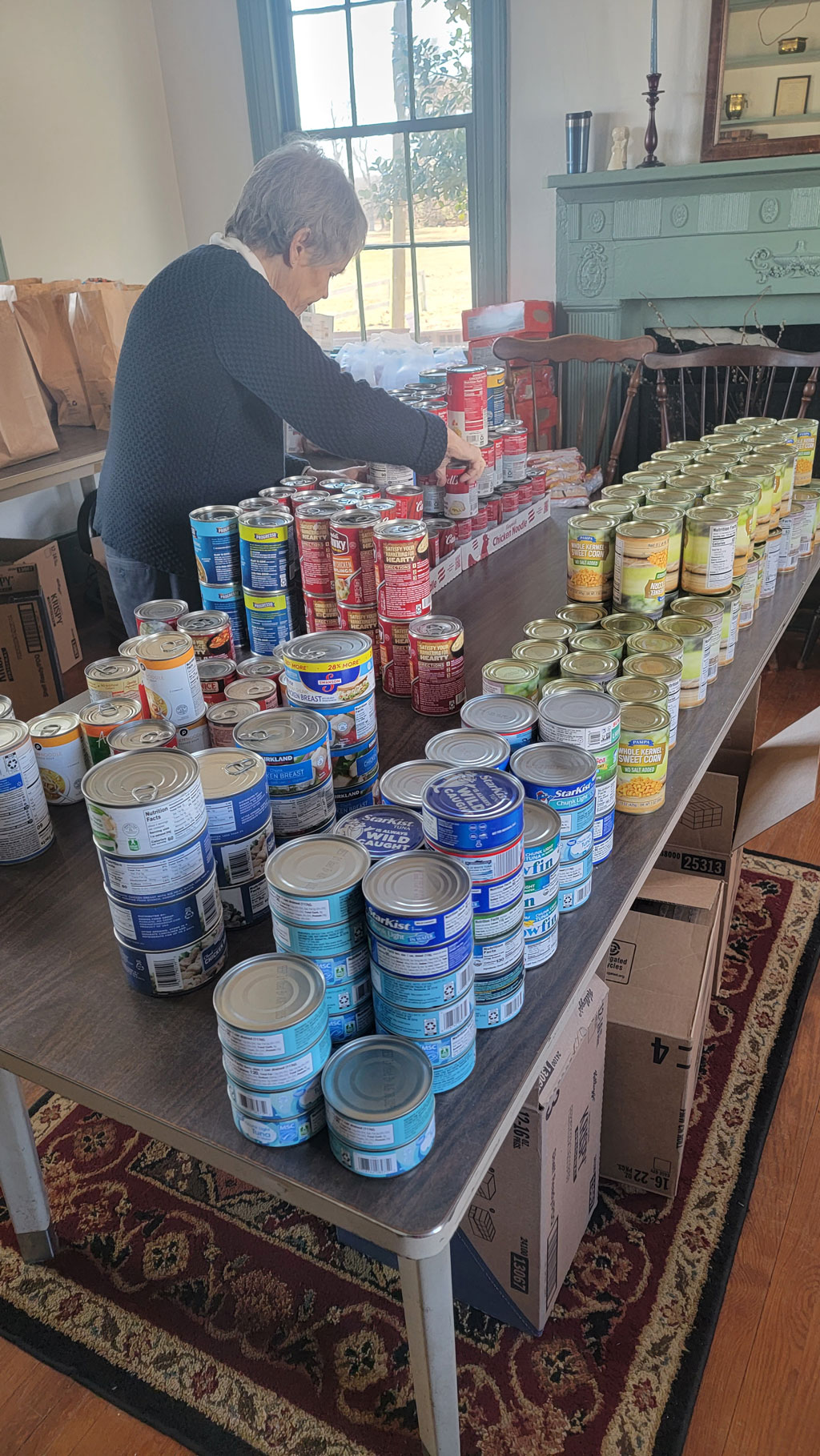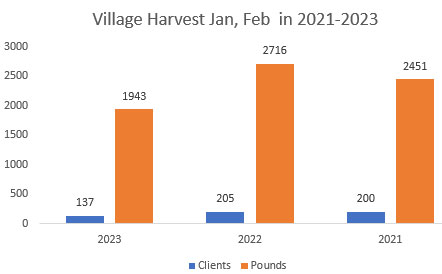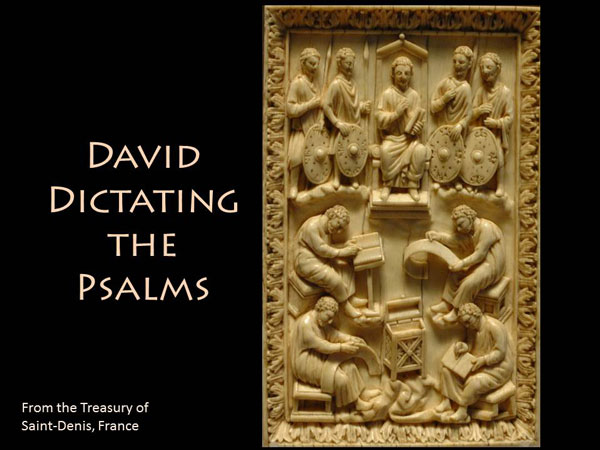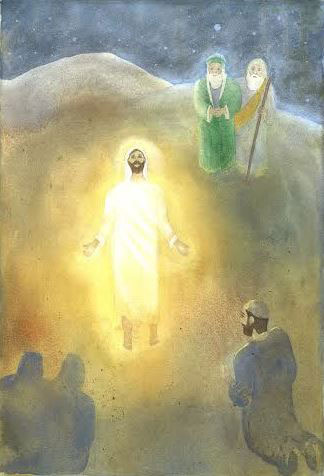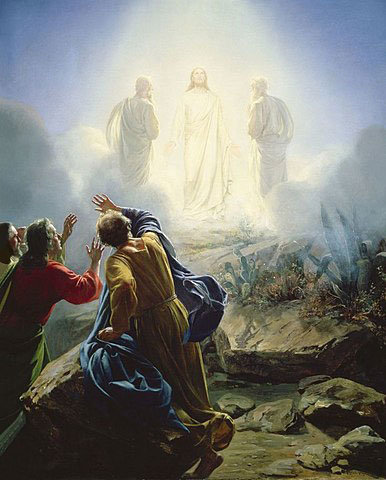I.Theme – Signs and promises, signs requested, signs given, and signs difficult to discern.

![]()
“Christ Instructing Nicodemus” – Jacob Jordaens (1593-1678)
The lectionary readings are here or individually:
Old Testament – Genesis 12:1-4a
Psalm – Psalm 121
Epistle –Romans 4:1-5, 13-17
Gospel – John 3:1-17
Today’s readings are all about signs and promises, signs requested, signs given, and signs difficult to discern. Lent is a time to ask God to help us to be more loving, remembering that God is always ready to strengthen us. The thrust this week is to believe and be reborn.
Abram is covenanted by God; he is given the promise of a being a leader of a great nation, when he was beyond the years of having children. Abram trusted God to chart a path for him into the unknown, leaving his people and country and venturing into a new life.
In contrast, Nicodemus, certainly better educated, never understood the significance of Christ beyond the miracles. Nicodemus comes to Jesus looking for a sign – and when he is given it, he cannot understand it.
The issue is how you can be reborn at his age. The meaning of being “born from above” begins their discussion. The first is ‘anew, again’ on the physical level, which is what Nicodemus understands; the second is ‘from above’ spatially, which is what Jesus seems to intend. Jesus contrasts the realm of the Spirit, which is eternal and heavenly, with the realm of the flesh, which is earthly, weak and mortal (but not necessarily sinful).
Nicodemus never understood that Jesus’ teachings were for more than the Jews and that he would have to abandon his older understandings. His knowledge was a barrier trying to understand. God ultimately gave us his Son for stengthening us and the community.
Paul discusses Abraham’s ‘wages’ which he says are a gift when the promise comes true. Paul explains how Abraham’s faith, revealed in his willingness to believe and act on God’s promises, makes him right with God.
Who is driving your car ? You or God ?
II. Summary
Old Testament
In a time of migration of peoples about 4,000 years ago, Terah has travelled west with his son Abram, Abram’s wife Sarai ,and his grandson Lot from Ur, near the delta of the Tigris and Euphrates rivers. Terah and his family settle for a time in “Haran” (11:31), where Terah dies. Abram now comes to centre-stage.
This is the call from God to Abram”
God makes a pact with Abram: if Abram will leave behind his land and kin (and his pagan past), and live in “the land that I will show you” (12:1, cease to be semi-nomadic), God will honor him in seven ways:
-make of him “a great nation” (v. 2), (2) confer favor on him (“bless you”),
-make his name renowned (“great”)
-make him a vehicle of good fortune (“be a blessing”),
-show favor to those who show him favor (“bless”, v. 3), (6) exclude those who show him disrespect (“the one …”), and as other peoples come to trust in God, they will find themselves similarly blessed.
In doing “as the Lord had told him” (v. 4), Abram shows his trust (faith) in God. This covenant marks the start of communal relations with God. Being blessed seven ways is being blessed totally: he, his family and his people. In v. 5, “the land” is identified as Canaan.
At Shechem, when Abram erects an altar at a pagan shrine (“the oak of Moreh”), God promises the land to his descendants. At “Bethel” (v. 8), Abram builds another altar. God is god of the whole land. Abram and his family continue southward in stages and, due to famine, go on to Egypt – to return later.
All this at age 75, when most folk stop wandering or are unable to do so due to age. This is a covenant, an agreement between God and his people, and is something God carries out throughout the history of his people. The covenant with Adam and Eve – with Noah and the rainbow – and later with Moses – God promises great things to those with whom he covenants and his word is his bond.
There may be a feeling that God cannot use us as we get older. We may not be able to do the things we once did but there is always something we can do, encourage, watch and pray – these things we can all do.
Abram steps out in faith and sometimes we too can do no other, frightening though it may seem but resolute in the knowledge that God can do more than we could ever ask or think.
Psalm
Psalm 121 is a Psalm of the Ascents; this was probably sung by the Hebrew Pilgrims as they climbed the steps to the Temple at Jerusalem. Psalms 120 – 134 were the fifteen psalms of ascent and this particular psalm is a hymn of trust.
The opening imagery can be interpreted in two ways; either that the mountains represent God, who made them, or that they represent the alternative source of hope.
Perhaps a pilgrim asks the rhetorical question in v. 1, as he journeys through hill country, where pagan gods were once thought to dwell. He begins to answer his own question (v. 2): his help is from God, the creator. Then another voice, perhaps a priest, continues, telling of God’s protection of Israel: God is always vigilantly protecting the way of the pilgrim (v. 3). God is “your shade” (v. 5): he protects him from sunstroke and from moon rays (then thought to be harmful). He protects the faithful “from all evil” (v. 7), throughout their lives.
Epistle
Paul has written that one can attain a right relationship with God through faith, without living by Mosaic law. Now he takes Abraham as an example; he asks: what can we conclude about faith vs. Law by looking at Abraham’s life?
Judaism claimed that Abraham kept the Law before it was given, that he was godly (‘justified”, v. 2) because his “works” were in accord with the Law. Paul rejects this claim; rather, it was, as Genesis shows, Abraham’s faith which counted for him (“reckoned”, v. 3) as godliness. God “justifies the ungodly” (v. 5). For the worker, “wages” (v. 4) are expected, but for one who trusts (with no certainty of reward), such trust counts with God.
In vv. 6-9 Paul quotes from Psalm 32 and Genesis, interpreting the verses jointly as showing that those who trust in God obtain his favour, whether they be keepers of the Law or trusters in God. Paul then argues that, because Abraham trusted in God’s pact before he was circumcised, Abraham’s faith (and not his keeping of the Law) was what counted for him with God (v. 10). Indeed, he says, circumcision was a confirmation of the right relationship he had attained through faith. It made Abraham “ancestor” (v. 11) of all who trust in God, both Jews (v. 12) and non-Jews (v. 11).
So the “promise” (v. 13) that Abraham would be father of many nations (“inherit the world”) came as a result of his faith and not his law-keeping. If the only way of achieving union with God is through keeping the Law, faith is irrelevant and the promise to Abraham is nonsense (v. 14). Because it is impossible to keep every law, sin is inevitable; God’s response to sin is punishment, breakdown of human relations with God: “the law brings wrath” (v. 15). But for those living by faith, transgression (“violation”) of the Law is irrelevant. So a right relationship with God “depends on faith” (v. 16), resting on God’s “promise” of “grace”, his gift of love – made not only to Jews but also to all those who trust in God, “of many nations” (v. 17). God spoke these words to Abraham; God gives spiritual “life” to the unbeliever; he restored Isaac’s life when he was as good as dead; he brought a son “into existence” to Abraham and Sarah, in their old age. They were “fully convinced” (v. 21) that God could do it. If we trust in God and have faith in the power of Christ’s resurrection, our trust will count with God too (vv. 24-25).
Gospel
This story, like several others in the fourth gospel, is primarily addressed to persons living c. AD 90 who were flirting with joining the John’s community, but were reluctant to come forward publicly and do so
Nicodemus was an important and wealthy man in the city of Jerusalem who was both a Pharisee and a member of the Sanhedrin, the Jewish ruling council. It may have seemed that Nicodemus had everything–money, prominence, and power. However Nicodemus needed something else; he was a seeker of truth. He addresses Jesus as “Rabbi”, recognizing him as a new teacher of the Law.
Unlike the other Pharisees who scoffed or plotted against Christ; Nicodemus went to meet with him defying social prejudice. It was at night so it could be secret . The night may be symbolic with Nicodemus cast in darkness, in ignorance, in unbelief.
Verses 3:1-17 contain 3 questions / statements by Nicodemus, and 3 responses by Jesus – each beginning with Jesus giving his word of honor to his response, “Very truly, I tell you:”
1_ 3:3, no one can see the Kingdom of God without being born from above; (born anew).
He came to Jesus by night and said to him, “Rabbi, we know that you have come from God, a teacher, for no one is able to do these signs which you do except God be with him.”
Nicodemus was aware that Jesus had come from God because no one could do the signs/miracles that Jesus did if he weren’t from God and shows his significance
However, Jesus wasn’t simply a great teacher, but the one who reveals God’s essential character of love for the whole world (3:16). A person can see signs and miracles and still not have genuine faith. He is still not quite what faith in Jesus must be.
Jesus tells Nicodemus that “no one can see the kingdom of God without being born from above” (v. 3). Only here and in verse 5 is the kingdom of God mentioned in John. The faith that Nicodemus and his group affirmed is not adequate for seeing the kingdom of God. He needs a spiritual rebirth
Jesus responded that the ties of “flesh,” though real, were spiritually meaningless. These words are the first words directly spoken by Jesus in John’s gospel about transcending the strictures of tribe
One cannot experience the kingdom of God simply by virtue of the miracles of Jesus. Nicodemus and his group are looking at things only from a human perspective. What is needed is new life, new sight. The real birth was a new birth through Spirit, “from above.”
The kingdom of God cannot be seen, observed, or experienced simply as a human phenomenon, legitimated by miraculous signs. It is a gift to be received.
Being born of the Spirit is talking not about a new mystical height of experience but about a way of living out the life of God in the world. When you see like this, you see the connection between Jesus and God and you see God in Jesus not trying to compete for adoration but seeking to establish a relationship of love and community. The focus is life. The means is relationship. The motive is love. This is the emphasis of 3:16.
2_3:5, no one can enter the Kingdom of God without being born of water and Spirit; and,
What does it mean to be born of the water? To have our sins washed away. We never outgrow the need for having our sins and imperfections washed away daily and continuously. The water in baptism reminds us of our need for daily cleansing and washing.
Water is a major symbol in the opening chapters of John.
John baptizes with water (1:26, 31, 33). Jesus has the purification jars filled with water (which become wine) (2:7, 9).
Water is connected with nature and earth. It knows no obstacle. Going around, under, and through, it always attains the lowest level. Water is the great decomposer, ultimately more powerful than any other form of matter.
What does it mean to born of the Spirit? To have the Spirit of Christ living inside of us. It mean to have the love of Christ, the joy of Christ, the peace of Christ, the patience of Christ, kindness of Christ, the goodness of Christ, the faithfulness of Christ, the gentleness of Christ, the self control of Christ living inside of us. It is having the Spirit of Christ taking up residence in us and living within us.
The wild and free spirit, unlike the water, is airborne, blowing where it wills. It has a trajectory. It’s going someplace, though it’s not at all clear where. Spirit is both creative and chaotic, unpredictable and dangerous, inspiring and irrational–the masculine.
To be “born again” means to hear thell of God and throw our lives into his service.
And so, salvation lies in being born anew; in being born from above – in re-defining one’s “family of origin.”
3_3:11, we speak of what we know and testify to what we have seen; yet you do not receive our testimony. If I have told you about earthly things and you do not believe, how can you believe if I tell you about heavenly things?
Nicodemus apparently, at this moment, did not comprehend Jesus and what Jesus was talking about. He doesn’t have faith. Jesus says: you, Nicodemus, don’t comprehend what can be told in analogies (“earthly things”, i.e. “wind”, v. 8), so how can you possibly believe mysteries?
The story of the Bronze Serpent in John 3:14-15 can be found in Numbers 21:1-9. Specifically, he recalls the story of the plague of venomous serpents that were threatening the Israelites (Numbers 21:6-9)
Christ is the antitoxin to the “snake” released upon our world (Satan). Christ would be “lifted up” in what Satan thought was his triumphant moment. All are bitten by sin, yet those who gaze upon Jesus will be healed.
In this Gospel, it is Jesus’ being “lifted up” on the cross that is the moment of triumph for the one who is God’s own presence among us.
In John, the Son of Man is “lifted up” (on a cross), whereas in Matthew, Mark and Luke the Son of Man is killed. Indeed, in John, Jesus is not said to die, but rather he gives up his Spirit. (Verse 19:30) Instead of this being a shameful, brutal death, “being lifted up” reveals God’s glory, for it is from on high – where God resides – that God sees the world, and so loves the world as to send his Son.
Jesus, like the serpent, will similarly be lifted up (gloried), and this sign can also easily be misunderstood as a mark of the defeat rather than perceived as the place where Jesus accomplishes the mission entrusted him by God (19:30). Only those who can look beyond the material referent of the sign (flesh) will perceive and participate in God’s redemptive work (Spirit).
The phrase, “believes in him,” occurs here for the first time in this gospel, When we believe in Christ, we are given eternal life.
God did not send the Son into the world to condemn the world, but in order that the world might be saved through him. Neither are Jesus’ followers to condemn the world that we live in either.
At the same time, we disciples know that we are to be “in the world but not of the world.” Followers of God and God’s ways are forever tempted and enticed to follow the values of the culture around us.
We human beings are not to judge or condemn any person of any religion, denomination or belief system that is different than ours. We may disagree with their religion, their denomination and their belief system, but we are not condemn that person to hell or everlasting death. We love that person as another child of God. At the same time, we share with them the love and knowledge of the true God, revealed through his Son, Jesus Christ our Lord.
16 For God so loved the world that he gave his one and only Son, that whoever believes in him shall not perish but have eternal life. 17 For God did not send his Son into the world to condemn the world, but to save the world through him.
John 3:16-17 clearly states that the purpose of God’s sending his Son was not to condemn the world but to offer it eternal life. He has come to offer it freedom, preservation from obscurity (or worthlessness). The selfish life leads to death.
The incarnation, life, death and exaltation of Christ are all rooted in the love of God. In John the death of Jesus is never viewed as God’s outpouring of punishment on Jesus in our behalf, but as a revelation of God’s love for the world and the glorification of the Father and the Son
God’s love means attaching himself to the world. God sent his Son. The Word became flesh. Love is not necessarily an inward emotion, but outward actions — a theme that reoccurs throughout this gospel.
God loved the whole world including people who don’t like him, who don’t believe in him, who could care less about him. God loves the world, and the world does not love God.
However, the next statement (v. 18) makes it clear that salvation is conditioned upon believing in him. This is most clearly stated in 3:18-21. In effect, it is not God or Jesus as such who judges or condemns, but it is the human response to what God has done in Christ that has within it the makings of human destiny, whether eternal life or eternal judgment (note particularly verse 19).
This passage is about the life which his coming brought as it opened our eyes to a new way of seeing and engaging with God through Jesus. Jesus feeds 5000, but this is a pointer to that deeper reality: he is the bread of life. He heals a blind person; but the truth that matters is that he is the light. So he is also the life, the truth and the way.
John 3:15 is the first time “eternal life” is used in the gospel. Every time the phrase is used in John, it is with a present tense verb — usually “have”. It is something believers have now, and perhaps should be translated “unending life”.
Eternal life was not a concept of time. It meant “perpetual” and, even more, “abundance.” To plunge into the love of Jesus means to finally know perpetual and abundant life.
To have eternal life is to live life no longer defined by blood or by the will of the flesh or by human will, but by God (cf. 1:13). “Eternal” does not mean mere endless duration of human existence, but is a way of describing life as lived in the unending presence of God
So, life eternal is a gift of God’s grace. We apply that grace to ourselves by trusting Christ. It is when we reach out to him as the only ground for our eternal security, that we receive, as a gift of God, eternal salvation. “Ask and you shall receive.”
In summary – To stand accepted before God requires a conversion of one’s whole being. It requires being born from above, washed new by the Spirit of God. Such a dynamic life-change demands a total renewal of our being. For our frail humanity, such a spiritual change is impossible. Our only hope lies in the hands of God. Only the Spirit of God can renew our beings, only he can give eternal life as a free gift.
God has no particular designs or plans for our punishment or rejection. Instead, God only plans and works for our salvation and health. God desires for us only life, life in all of its abundance here and now as well as in the age to come.
III. Articles for this week in WorkingPreacher:
Old Testament – Genesis 12:1-4a
Psalm – Psalm 121
Epistle – Romans 4:1-5, 13-17
Gospel – John 3:1-17









 “Nic drove a large black Escalade. He loved the way the Escalade roared to life when he turned the key in the ignition, the way he sat up high above the rest of the traffic, barely having to press the accelerator to gun past anyone in his way and to get to his destination in record time.The Escalade suited Nic, summed up who he was, really.Big, bold, in charge.”
“Nic drove a large black Escalade. He loved the way the Escalade roared to life when he turned the key in the ignition, the way he sat up high above the rest of the traffic, barely having to press the accelerator to gun past anyone in his way and to get to his destination in record time.The Escalade suited Nic, summed up who he was, really.Big, bold, in charge.”



